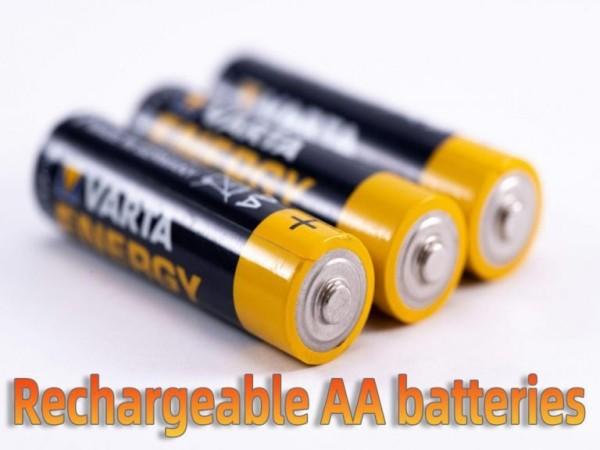I just started using some of these Lithium-Ion 1.5V AA cells, and must say I can see many benefits with them. It’s a pity most articles about them date back two or more years with comments such as they only come in odd sizes, produce 3.7V, lower capacity than Ni-Mh, etc. As of 2022 the Lithium-Ion cells should be seriously considered as a first option, as they come in AAA and AA sizes now at 1.5V.
Outright Pros for Li-Ion:
- Charge way quicker than Ni-Mh
- More energy density than Ni-Mh
- Similar voltage to Alkaline cells
- About double or more lifecycle charges (lasts longer)
- Very low self-discharge rate (on the shelf) at about 1% per month vs 1% per day for Ni-Mh
- As environmentally friendly as Ni-Mh with regard to not being single-use only
- Better performance at varying temperature ranges than Ni-Mh
- Safer to charge than Ni-Mh as they have built-in protection circuits and plates
- Often no separate charger required as many come with a USB-C socket built-in
Cons for Li-Ion:
- Not as safe for delivery / couriers
- More expensive up front (but not when considering cost per lifetime use)
One thing I’m not sure about is the heavy discharge use. Alkalines for example are not so good in camera flashes as they cannot produce that quick heavy discharge for prolonged periods like Ni-Mh can. I’m thinking though that Li-Ion cells can also handle this if I consider how quickly they charge. This was a particular strength of Ni-Mh over Alkalines.
One thing to note about voltages though, and this was especially true for Ni-Mh. Ni-Mh cells are often reported to be “flat” in consumer devices, but it is because they produce a constant 1.2V, unlike Alkalines which start at 1.5V and constantly show a measurable discharge. I have been using Ni-Mh cells for ages in devices which say the cells are flat, and I’ve done a post about this before. Li-Ion cells act similarly with a flat discharge curve, so will likely report as being “full” for ages, until they suddenly stop working. Most consumer devices measure for Alkaline discharge curves. A plus is with Li-Ion cells though that you can keep a spare set fully charged, and they’ll stay that way with very little self-discharge.
See https://www.takomabattery.com/which-rechargeable-aa-batteries-should-i-choose/
#technology #environment #battery #rechargeable


